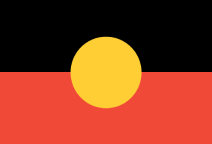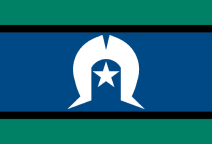Preparing your business financially so it is ready to respond and recover when a business disruption occurs is as crucial as knowing what to do when disaster strikes. There are several general business finance practices you can undertake to prepare your finances for a crisis.
Keep your financial records up to date and accessible
Make sure your financial records are up-to-date, accurate, protected and easily accessible.
Records such as receipts, invoices and cash register tapes can provide valuable information to effectively manage your business through a crisis. By law, it's also mandatory to maintain certain records such as those required by the Australian Taxation Office (ATO).
Consider using EFTPOS or a credit card rather than cash for business purchases. Online bank statements can provide proof of your purchases to insurance assessors and the ATO.
Back up your financial data
It's important to back-up your financial data regularly – either to an external hard drive or to a cloud application.
Using cloud applications to back-up data will allow you to access your financial records from anywhere. If a crisis occurs and your computer is destroyed, the data stored in the cloud application will not be lost. As long as you have internet access, you'll be able to retrieve your information from the cloud.
Scan rather than file receipts and important documents, and store physical documents off-site in a secure place, such as at a relatives' house or in a safe deposit box with a bank. This may seem an unnecessary step but after a crisis, simply proving your identity can be incredibly tough if you're left with nothing.
Choose business accounting software
Learn how to find and choose reliable accounting software package so you can set up your bookkeeping system with a chart of accounts and single touch payroll.
Regularly prepare financial statements and forecasts
Financial statements and forecasts that are prepared regularly are valuable reference tools to help guide your business planning. They are also key documents for attracting funding.
Investors and creditors will use financial statements to assess the financial health of your business.
There are three major financial statements to understand:
- Profit and loss statement
- Cash flow statement
- Balance sheet.
These financial statements should not be viewed as purely assisting you to meet your regulatory requirements, but as a necessary tool for you to manage the performance of your business and plan for the future.
Manage and forecast cash flow
Cash flow supports the growth and survival of your business.
It's important to manage your cash flow on a daily, weekly and monthly basis by monitoring the flow of cash going into and out of the business. This will assist you to identify potential risks and areas where you could improve performance or reduce expenditure.
Review your cash flow and create projections based on when money will come in and out – including your statutory obligations. By developing and documenting cash flow projections over several months, you can estimate when the business will be short of money and take appropriate steps beforehand.
The cash flow budget is the most useful operational budget for a crisis. It's also the most requested budget when seeking finance from a financial institution.
To manage and forecast cash flow, the following templates can be used:
Finance in Crisis Checklist
In addition to managing your finances on a day-to-day basis, implementing the following measures to help you be financially prepared in the event of a crisis.
Step 1. Identify financial obligations and expenses that must be paid
You shouldn't assume that because your area has been hit by disaster, your suppliers, vendors and creditors are aware of the situation and will grant payment extensions. Expenses such as a mortgage, lease, or rental payments may still need to be made even after a disaster strikes your business.
Have a solid understanding of your financial obligations and the expenses that will need to be paid even during a crisis. This will help you plan for your emergency fund and credit requirements.
Step 2. Build up an emergency cash reserve fund
Should a crisis force your business to shut or reduce operating capacity, having an emergency cash reserve fund that you can quickly draw on can help your business stay afloat.
The amount of cash a business should have in their emergency fund will vary depending on the business' income and expenses. It is recommended that a business should put aside enough funds to cover at least four to seven months' worth of fixed expenses.
Step 3. Make regular contributions to the emergency fund
Once your emergency cash reserve fund is established, it's important to make regular contributions to the account. Due to the unpredictability of crisis events, it is important that the fund remains active and intact to ensure there are always adequate funds available.
To prevent yourself from using the emergency fund for other expenses, keep your account separate from your regular business accounts.
Tip
Consider keeping a few hundred dollars cash on hand to see you through if your area loses power or banks and ATMs are out of commission.
Step 4. Use personal savings
If your business needs an injection of cash beyond the emergency fund, consider borrowing from your personal funds. Take the time to check how easy it would be to access your personal savings and consider moving some funds to an interest earning easy access account.
Step 5. Have credit available
If you don't have enough cash in your emergency fund, be sure to have a line of credit or a credit card available. Options include renegotiating an overdraft or applying for a loan. Talk to your bank manager or financial advisor about the available products they have that suits your needs.
Tip
Maintain a good credit history to enable you to obtain emergency loans and qualify for better pricing on loans.
Step 6. Maintain a strong relationship with your bank or financial institution
Maintaining a strong relationship with your bank or financial institution will be beneficial to both parties. They will have a solid understanding of your business and be able to discuss the options available to you such as restructuring your business loans or delaying loan repayments.
Step 7. Create a policy for payroll during and after a disaster
Payroll is often overlooked in business continuity planning . You should not assume that your employees will continue to work without pay during or after a disaster. Be sure your employees are aware of your payroll continuity plans ahead of time in order for them to plan for their personal financial obligations.
Case studies
Loch Sport Marina Hotel
The Loch Sport Marina Hotel experienced a downturn after the 2006-07 bushfires in Gippsland, followed by floods in June 2007 and a blue-green algae outbreak in the summer of 2007 to 2008.
While business is sound and going through good times, put in place financial arrangements to help you in the case of an emergency. Don't wait until the emergency has struck and then go begging to the bank for money. Set up overdrafts, etc. when your business is in a positive growth cycle. This way you'll get a much more satisfactory arrangement.
Alan Hall, Loch Sport Marina Hotel


